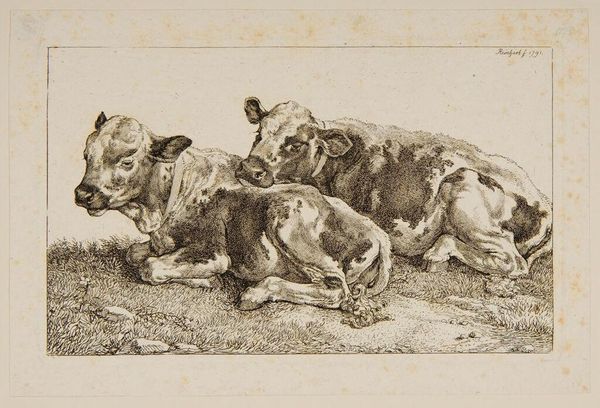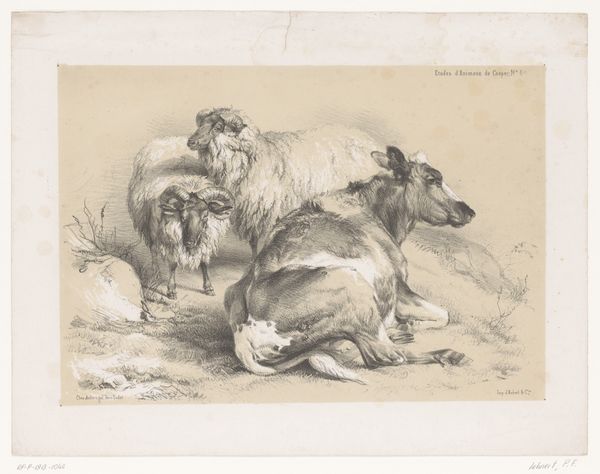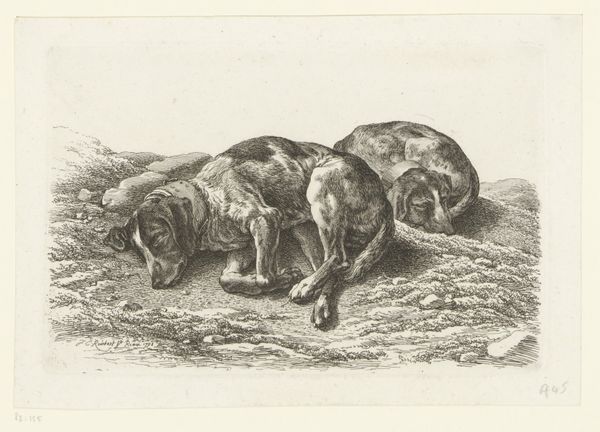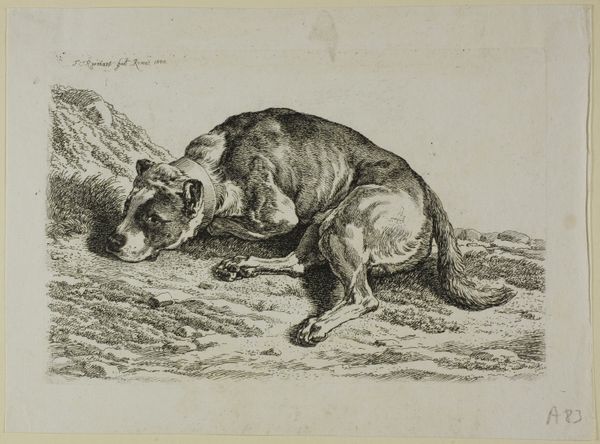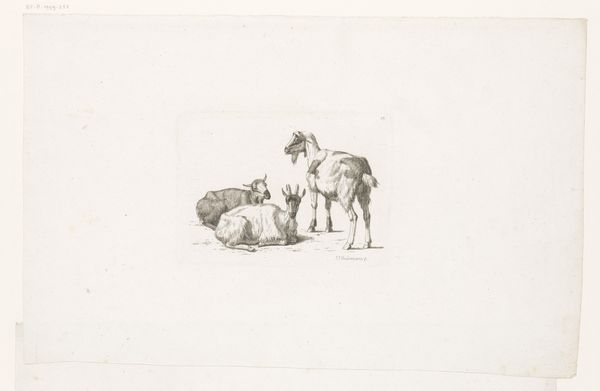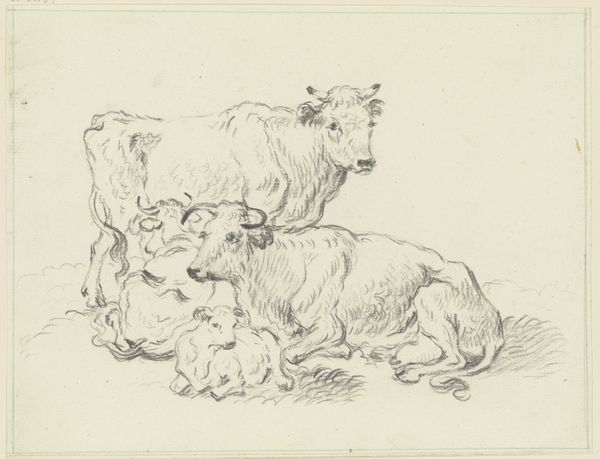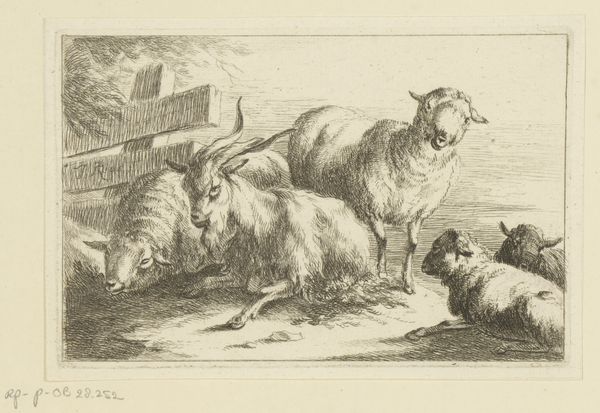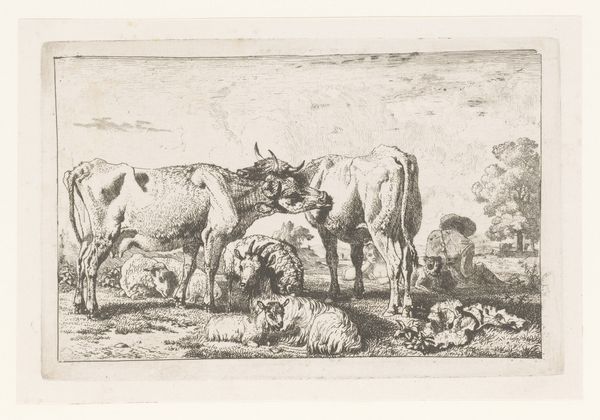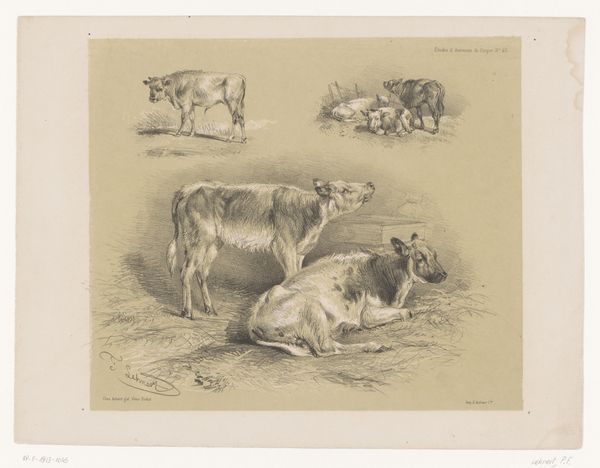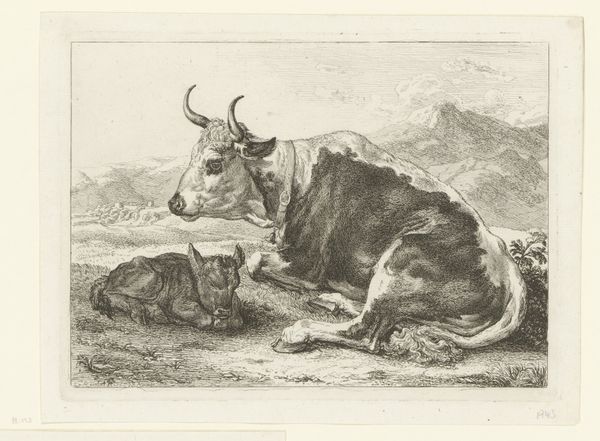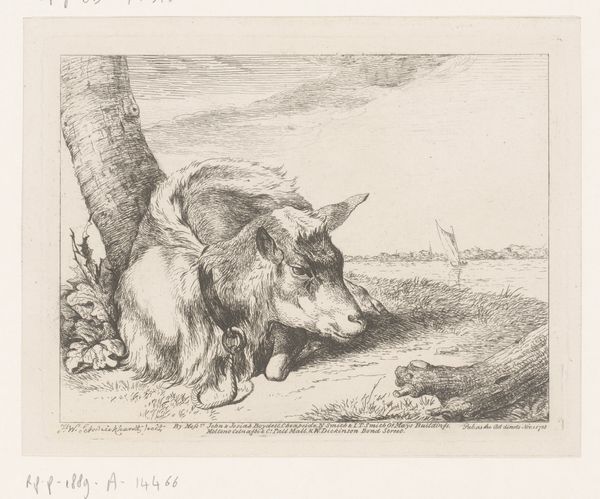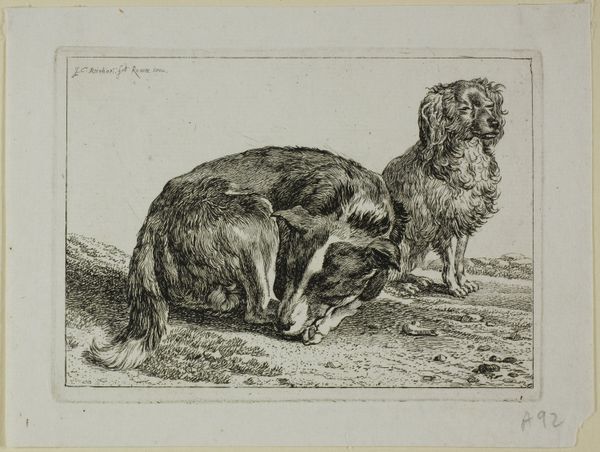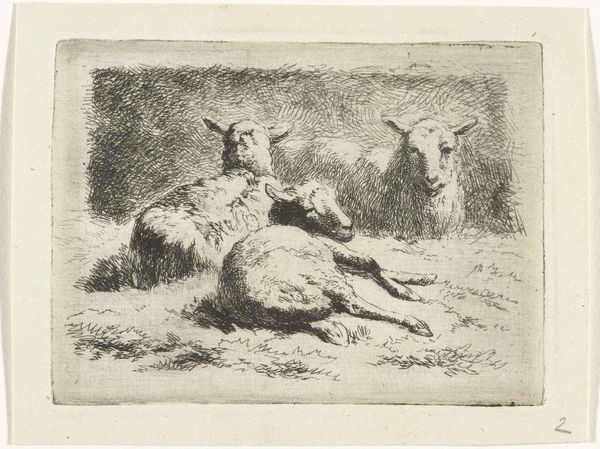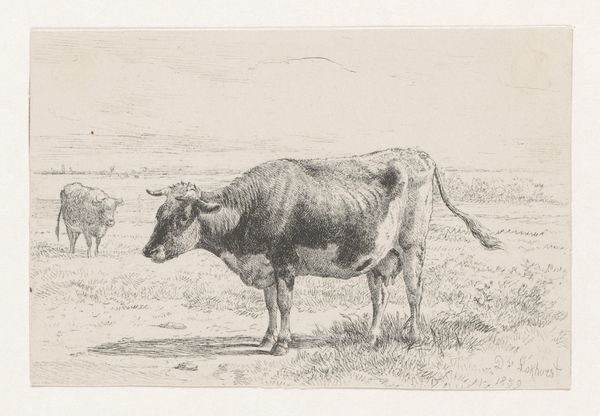
print, etching
# print
#
etching
#
landscape
#
genre-painting
#
realism
Dimensions: height 129 mm, width 207 mm
Copyright: Rijks Museum: Open Domain
Curator: This is Johann Christian Reinhart's "Twee liggende kalveren" created in 1791 using etching as its medium. What are your immediate impressions? Editor: Calm, definitely calm. A sense of pastoral idyll, almost melancholic in its stillness. They seem resigned to the simple existence of grazing and rest. Curator: That melancholy could stem from a reading of calves as a symbol of innocence and vulnerability, especially given how agrarian societies have often viewed cattle as a food source, imbuing them with symbolic sacrifice. Editor: That is a grim overlay! But in the late 18th century, the popularity of pastoral scenes provided visual escapes from burgeoning industrialization and political unrest. I would argue it served as propaganda, obscuring exploitation and class division through idealization of rural life. Curator: A plausible counter-reading. Even Reinhart's commitment to realism doesn’t preclude this inherent cultural tension, the idealized versus the material reality of farming. Consider, also, the cultural understanding of animals during that time. Representations of domestic animals weren't just pictures; they were about conveying humanity's relationship with nature and dominion over it. The visual language is loaded. Editor: I’m struck by Reinhart’s meticulous rendering of light and shadow through etching. The individual strands of grass, the subtle texture of the calves' hides— it elevates a simple genre scene, in my view, giving it a deceptive depth. Curator: Precisely! The act of observing, documenting. Even the texture seems intended to evoke not just a sense of verisimilitude, but something of their tangible being-ness. The animals in repose suggesting perhaps nature's innate dignity despite their practical role to human societies. Editor: Dignity maybe, or even domesticity… a calculated domestication of the rural imagery, presenting to urban audiences a tamed, digestible, and less threatening image of countryside life. Curator: Interesting divergence in interpreting its impact. Ultimately, the image resonates precisely because of this enduring tension between pastoral ideal and historical truth. Editor: Indeed, it invites reflection about society’s projection on the natural world… how animals become both our sustenance and subjects of romantic fantasy.
Comments
No comments
Be the first to comment and join the conversation on the ultimate creative platform.
